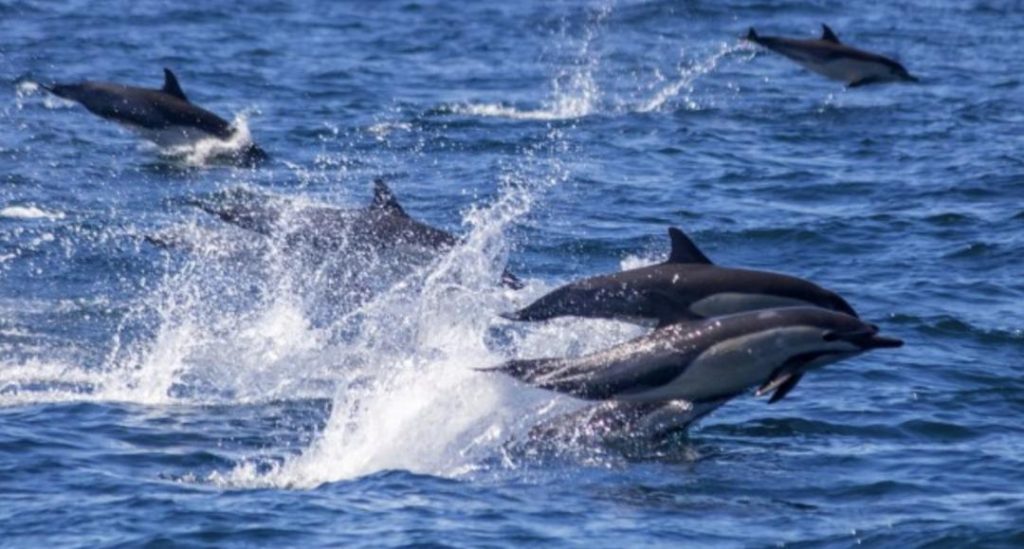
Dolphins & Whales Regularly Socialise with Each Other: Study
In a fascinating discovery, researchers from Griffith University have found that dolphins and whales regularly socialize with each other, engaging in playful interactions that are often mutual. The study, published recently, analyzed videos and photographs of interactions between baleen whales and dolphins, covering 19 species across 199 separate events.
The findings of the study have shed new light on the behavior of these two iconic marine mammals, revealing that they are more social than previously thought. The researchers used a combination of video and photographic data to analyze the interactions, which were collected from various locations around the world, including the oceans of Australia, the United States, and South Africa.
According to the study, the most common interaction between dolphins and whales involves dolphins swimming near the whale’s head. This behavior was observed in 44% of the interactions, suggesting that dolphins are drawn to the whales’ social behavior and may even learn from them.
The study also found that bottlenose dolphins were the most involved dolphin species, participating in 53% of the interactions. This is not surprising, given that bottlenose dolphins are known for their intelligence and social behavior. They are often seen playing and interacting with each other in the wild, and it’s clear that they also extend this social behavior to other marine mammals.
In addition to swimming near the whale’s head, the researchers observed other forms of interaction, including dolphins leaping or breaching near the whales, and whales even playing with dolphins by slapping their tails or flippers. These interactions were observed in both shallow and deep waters, suggesting that socializing between dolphins and whales is not limited to specific environments or locations.
The study’s lead author, Dr. Christine Erbe, a marine biologist at Griffith University, believes that these interactions are not just random encounters, but rather a form of social behavior that is important for the well-being of both dolphins and whales. “These interactions are not just about food or mating,” she said. “They’re about social bonding and learning. Dolphins and whales are showing us that they are capable of complex social behavior, and that they are willing to interact with each other in a playful and mutually beneficial way.”
The study’s findings have significant implications for our understanding of dolphin and whale behavior, and may even have practical applications for conservation efforts. By recognizing that these marine mammals are capable of complex social behavior, we can better understand their needs and develop strategies to protect and conserve their populations.
For example, the study’s findings suggest that dolphins and whales may be more likely to coexist peacefully if their social needs are met. By providing them with suitable habitats and reducing human impact on their environments, we can create conditions that allow them to thrive and interact with each other in a healthy and natural way.
The study’s authors also believe that their findings could have implications for our understanding of human social behavior. “By studying the social behavior of dolphins and whales, we can gain insights into the evolution of social behavior in general,” said Dr. Erbe. “This can help us better understand our own social behavior, and may even inform strategies for improving human social relationships.”
In conclusion, the study’s findings are a testament to the amazing social behavior of dolphins and whales, and demonstrate the importance of continued research into the behavior and ecology of these incredible marine mammals. By studying their interactions and behaviors, we can gain a deeper appreciation for the complexities of marine ecosystems and develop strategies to protect and conserve these incredible creatures for future generations.






